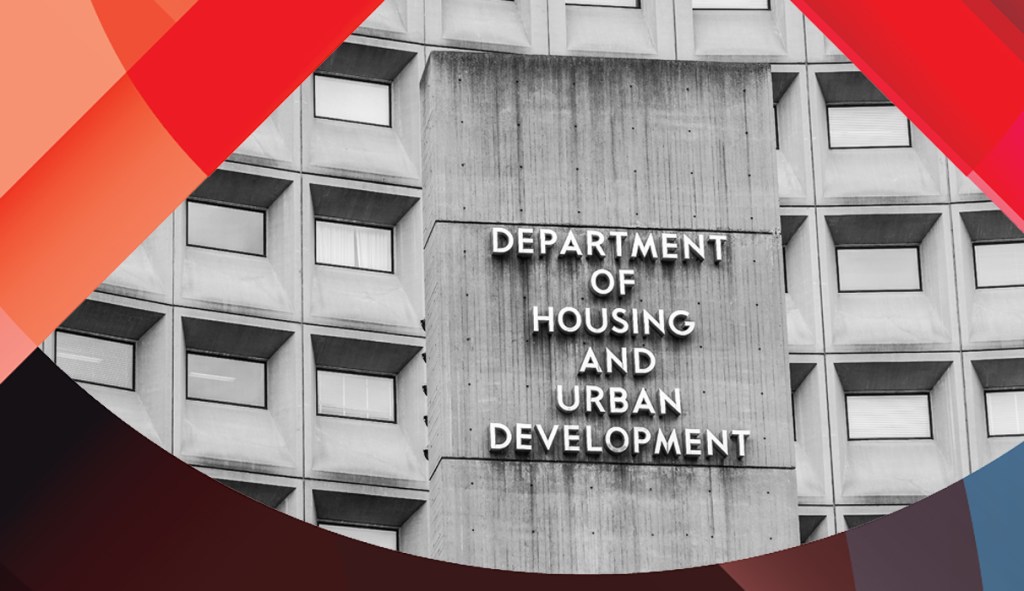
A new agreement between the Department of Housing and Urban Development (HUD) and the Federal Housing Finance Agency (FHFA) could heighten scrutiny of whether the government sponsored entities’ underwriting engines do enough to further fair housing.
The memo of understanding formalizes the sharing of information, resources, and coordination of existing and potential investigations of entities. It specifically highlights the GSE underwriting and appraisal policies.
On one hand, it’s not surprising that two federal agencies would publicly state their intention to collaborate on fair housing and fair lending enforcement. But the GSE underwriting requirements — specifically, Fannie Mae’s Desktop Underwriter and Freddie Mac’s Loan Prospector — have not been assessed for potential disparate impact under fair housing law.
And given the enormous influence the GSEs have on the mortgage industry, there are outstanding questions about whether their underwriting policies do enough to further fair housing goals. Loans to borrowers of color make up a very small portion of the loans the GSEs acquire. In 2020, 3.06% of loans Fannie Mae acquired were from Black borrowers and 3.8% of the owner-occupied mortgages Freddie Mac purchased were from Black borrowers.
It’s not certain exactly what impact Fannie Mae and Freddie Mac’s underwriting engines have, in part because they are “black boxes,” said Eric Kaplan, senior advisor at the Milken Institute Center for Financial Markets. But he said that how many loans go to borrowers of color is one of the issues that the new memo of understanding could address.
It remains to be seen whether the MOU will allow FHFA and HUD to “get inside the Fannie and Freddie black boxes and do a deep dive into the automated underwriting system to see whether those are either causing or related to disparate impact,” Kaplan said.
But if the agreement does lead to scrutiny of the regulated entities’ underwriting, the GSEs may have to face questions about their pricing.
Fannie Mae’s loan-level price adjustments and Freddie Mac’s delivery fees, which are meant to offset higher risk for loans to borrowers with lower credit scores and lower down payments, may come under heightened scrutiny, according to Michael Stegman, a fellow at the Urban Institute who was previously senior policy advisor for housing in the Obama administration.
“It’s one thing to make sure that your underwriting engines are in compliance with the Fair Housing Act,” said Stegman. “It’s another thing to say, you’ve got to really look at how your programs and policies can be proactive in dismantling the infrastructure of exclusion and racial bias.”
Another brick in the wall
Observers have cast the agreement as another sign that the Biden administration is focused on using its control over the housing finance system in its pursuit of furthering racial equity.
“This administration made it very clear that fair housing and fair lending are really critical to them,” said Meg Burns. Burns is executive vice president of the Housing Policy Council, and previously held positions at FHFA and HUD’s Federal Housing Administration. “To me, in some respects, this really falls squarely within a set of activities that are already underway and make sense.”
Although the FHFA’s acting director has been at her post for less than 60 days, Sandra Thompson has taken numerous actions that have given force to the Biden administration’s agenda. Thompson made those priorities clear in her first public statement as acting director, and she later issued a statement that the agency would not tolerate “illegal discrimination.”
“FHFA is committed to fair mortgage lending because it ensures that all Americans have equal access to safe, decent, and affordable housing,” Thompson said. Along with that statement came new quarterly fair lending reporting requirements for the GSEs.
In August, the FHFA announced a policy to include positive rental payment history in Fannie Mae’s underwriting, which experts expect will most benefit borrowers of color with limited credit history. A week later, Thompson announced ambitious new housing goals for the regulated entities, significantly increasing their quota of loan purchases from minority and low-income census tracts from 2022 to 2024.
“I mean, she’s not just keeping the seat warm,” said Gerron Levi, senior director of government affairs at the National Community Reinvestment Coalition. “She’s taking some significant actions, and moving ahead on issues that are important for lower-income borrowers, borrowers of color and communities of color.”
The next inquisition?
Although few were surprised by another Biden administration action to increase racial equity in housing, some industry stakeholders noted that HUD and FHFA’s new joint powers introduce uncertainty into the compliance landscape.
Two mortgage industry sources who requested anonymity because of the uncertain impact of the agreement said that it’s possible the two agencies could over-assert their authority. A new, overly burdensome regulatory regime is the last thing that mortgage lenders want.
Kaplan said that cooperation between the two agencies could lead to a more efficient approach to investigations, and more holistic assessments of lenders. Still, because of the broad nature of the agencies’ authority, he said it is understandable that lenders are concerned.
“Lenders are going to be very nervous about this,” said Kaplan. “[FHFA and HUD] can open up and share information, coordinate their attack, approach and investigation.”
He said that industry stakeholders hope the agreement leads to a more collaborative and effective pathway to solve for racial disparities. Their fear, however, is that the federal government will punish lenders who make mistakes unwittingly along with those who commit more serious infractions.
Kaplan said that lenders may be asking, “Is this going to be an inquisition, am I going to be on the hook every time I breathe?”
“But, if done properly, there will be tremendous efficiencies in terms of the information sharing,” Kaplan said. “The responsible lenders will stand out from irresponsible lenders.”





